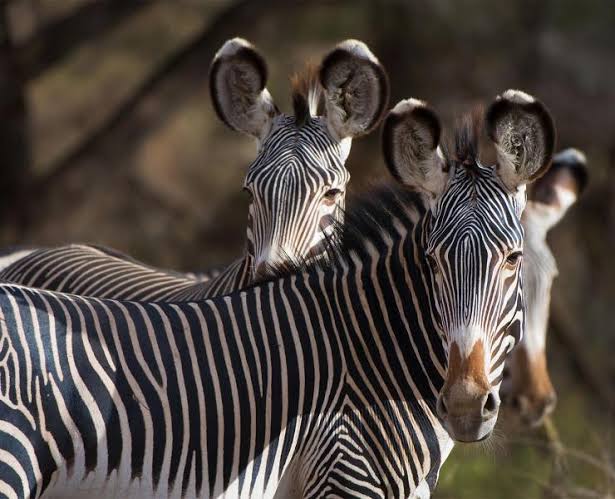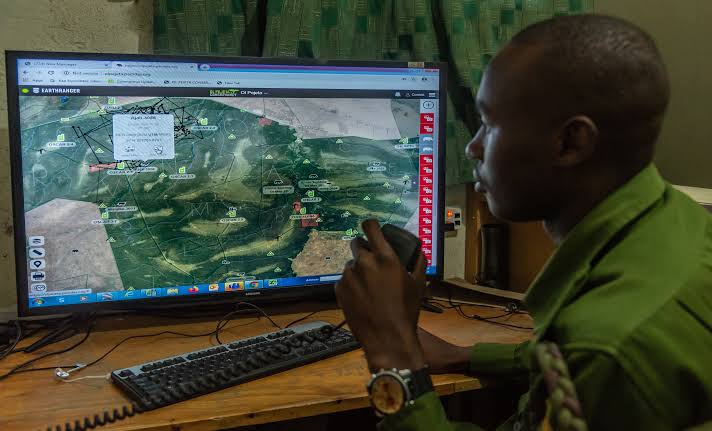Physical Address
60 Ekwema Cres, Layout 460281, Imo
Physical Address
60 Ekwema Cres, Layout 460281, Imo

Kenya is a nation renowned for its breathtaking wildlife, from the majestic lions and towering elephants of the savanna to the playful dolphins and humpback whales that grace its coastlines.
However, this incredible biodiversity faces a multitude of threats, including poaching, habitat loss, and human-wildlife conflict.
In response to these challenges, Kenya has emerged as a leader in the field of conservation technology, utilizing innovative solutions to protect its endangered animals.
One of the most prominent examples of this technological revolution is EarthRanger, a groundbreaking wildlife tracking and security management system.

Developed by a Kenyan company, EarthRanger equips park rangers with real-time data on the whereabouts of wildlife populations.
This critical information is collected through a network of sensors and tracking collars fitted on the animals themselves.
These collars transmit data on the animal’s location, activity levels, and even their health, providing park rangers with an unprecedented level of insight into the well-being of wildlife under their protection.
The impact of EarthRanger has been nothing short of remarkable.
By enabling rangers to pinpoint the location of animals in distress, EarthRanger has significantly reduced poaching incidents.
In the past, poachers could operate with a degree of anonymity, targeting vulnerable animals in remote areas.
Now, with EarthRanger, rangers can be deployed swiftly and effectively to intervene in poaching attempts, acting as a powerful deterrent to these criminal activities.
EarthRanger’s capabilities extend beyond anti-poaching efforts.
The system also plays a vital role in wildlife research and conservation.
The data collected by EarthRanger collars provides valuable insights into animal behavior, migration patterns, and habitat preferences.
This information is crucial for conservationists who are working to develop targeted strategies to protect endangered species.
For instance, by analyzing the movement patterns of elephants, researchers can identify key migratory corridors and implement measures to safeguard these vital routes.
Another area where technology is proving its worth in Kenya’s conservation efforts is in the fight against human-wildlife conflict.
As human settlements encroach on wildlife habitats, there is an increased risk of encounters between people and animals.
This can lead to livestock depredation by predators, property damage caused by elephants, and even human injuries or fatalities.
To address this complex issue, Kenya is deploying a range of technological solutions.
One such solution is the use of solar-powered fences.
These fences deter wildlife from entering areas of human habitation, creating a safe buffer zone between people and animals.
Additionally, communities living in close proximity to wildlife corridors are being equipped with early warning systems that utilize SMS alerts and even low-frequency sounds to deter animals from approaching settlements.
These technological interventions are helping to foster peaceful coexistence between humans and wildlife.
The use of drones is another innovation at the forefront of Kenya’s wildlife conservation technology. Drones are deployed for aerial surveillance, enabling rangers to monitor large swathes of territory efficiently.
This is particularly valuable in anti-poaching operations, as drones can cover vast areas quickly and identify signs of illegal activity.
Additionally, drones are being used to conduct wildlife surveys, providing valuable data on animal populations that would be difficult or even impossible to obtain using traditional ground-based methods.
Read More: Kenya Announces Plans to Develop National AI Strategy
Kenya’s commitment to technological innovation in conservation extends beyond the implementation of cutting-edge gadgets and gizmos.
The nation is also investing heavily in building the technical capacity of its conservation workforce.
Rangers are being trained in the use of these new technologies, ensuring that they can effectively leverage these tools to protect wildlife.
Additionally, Kenya is fostering collaboration between conservation organizations, tech companies, and research institutions, creating a collaborative environment that drives the development and implementation of new solutions.
In conclusion, Kenya’s embrace of technology offers a beacon of hope for the future of wildlife conservation.
By deploying a suite of innovative solutions, from real-time animal tracking to aerial surveillance by drones, Kenya is demonstrating that technology can be a powerful weapon in the fight to protect endangered animals.
As Kenya continues to refine its technological arsenal and share its expertise with other African nations, there is a growing sense of optimism that the tide can be turned in the battle against wildlife extinction.
This is just a glimpse into the many ways Kenya is using technology to save threatened animals.
With continued investment in innovation and collaboration, Kenya is poised to become a global leader in wildlife conservation for the 21st century.
Was this information useful? Drop a nice comment below. You can also check out other useful contents by following us on X/Twitter @siliconafritech, Instagram @ Siliconafricatech, or Facebook @ Silicon Africa.